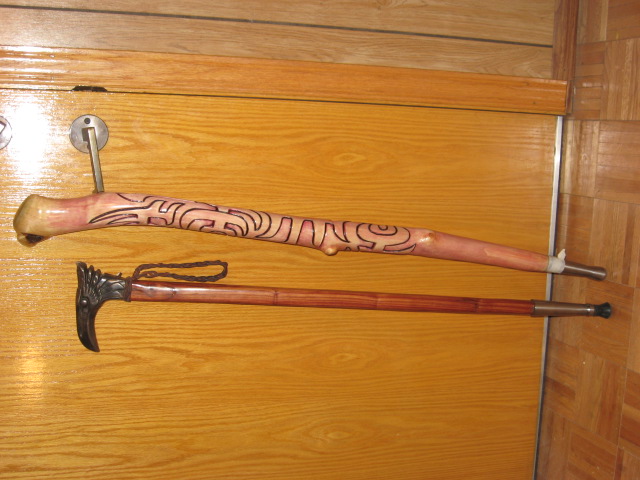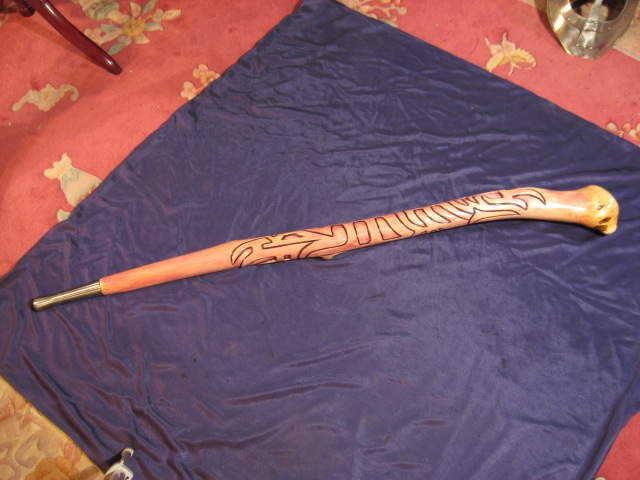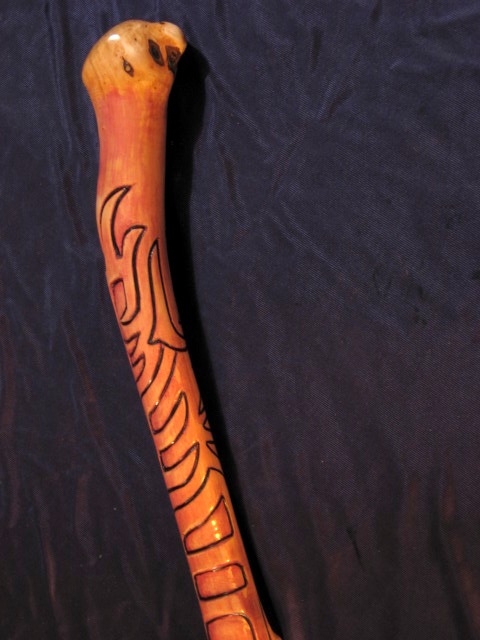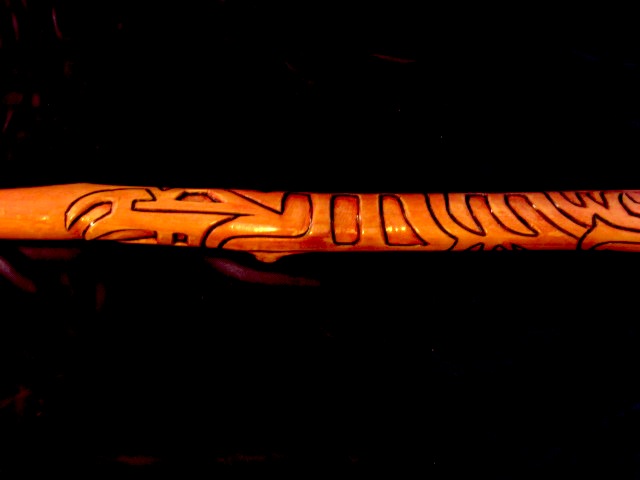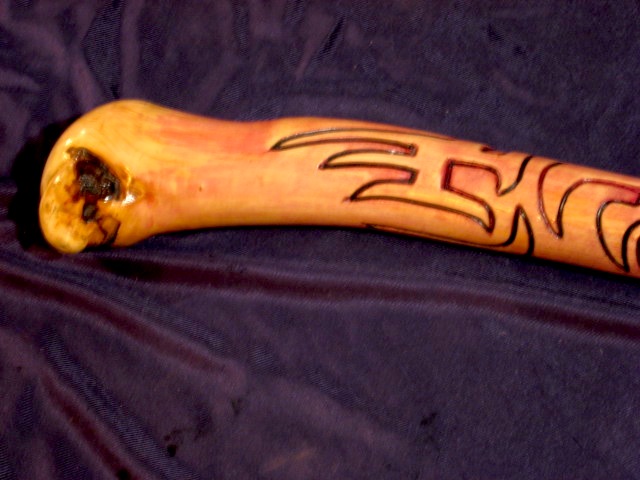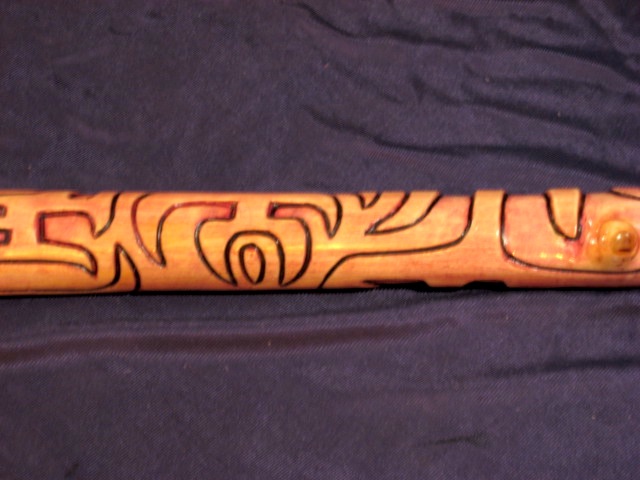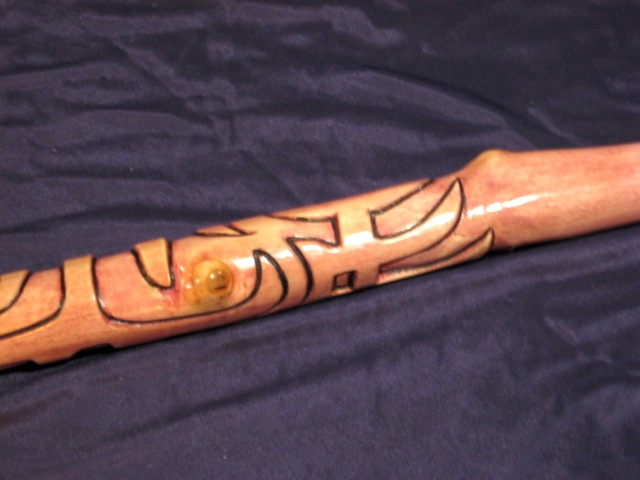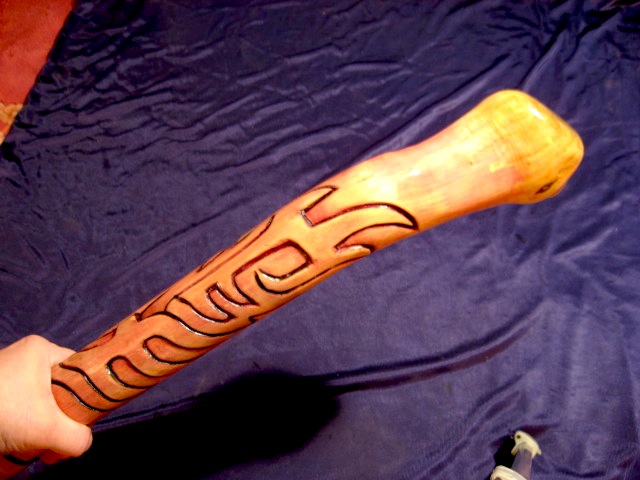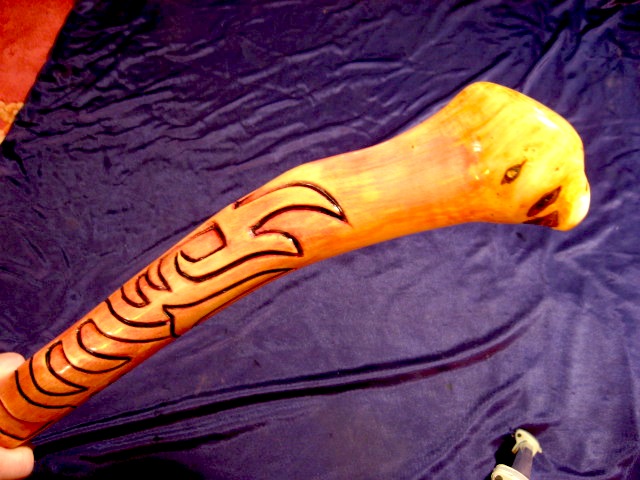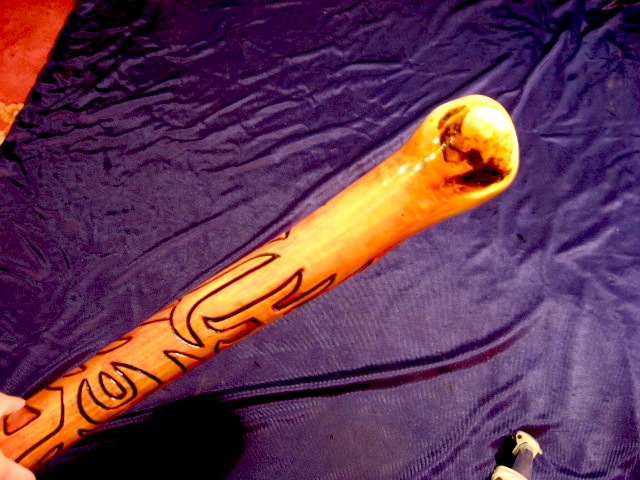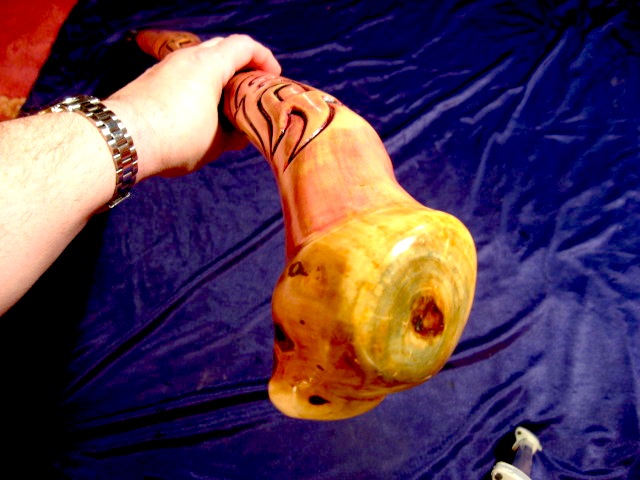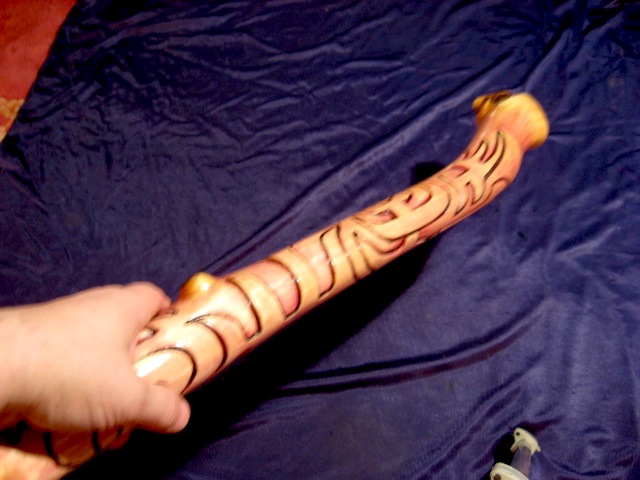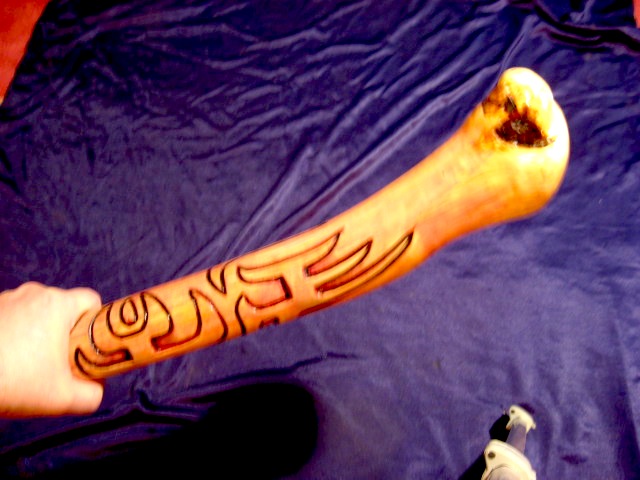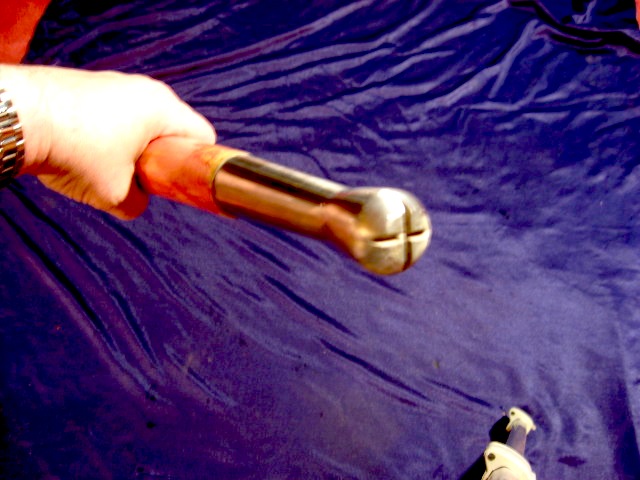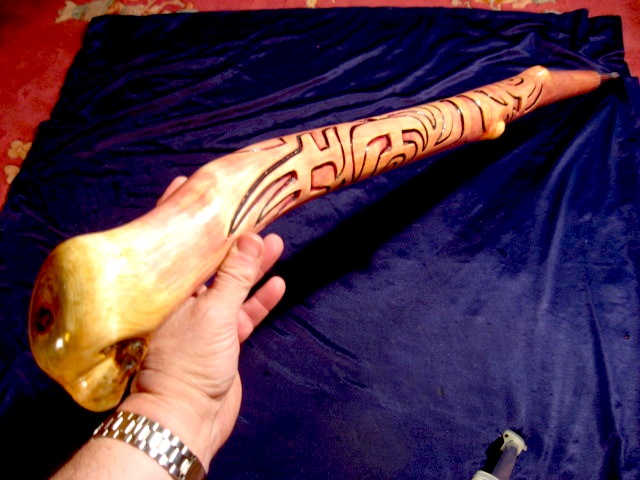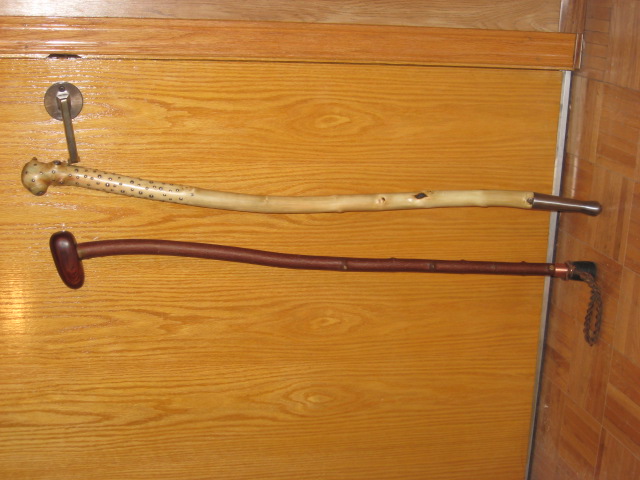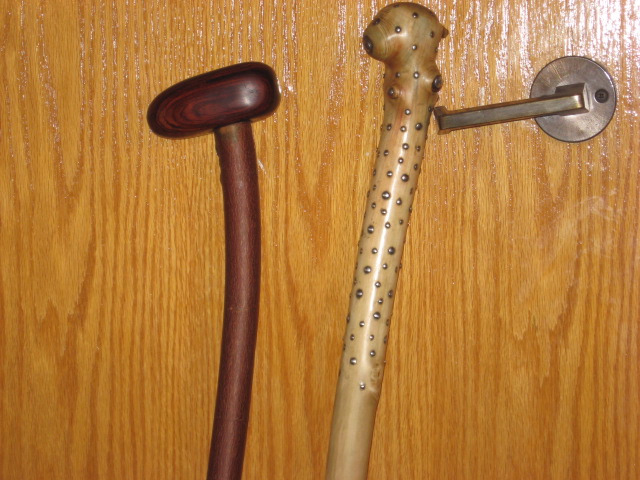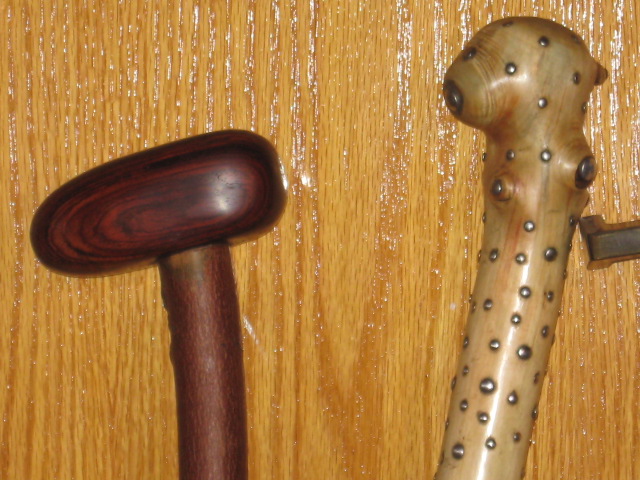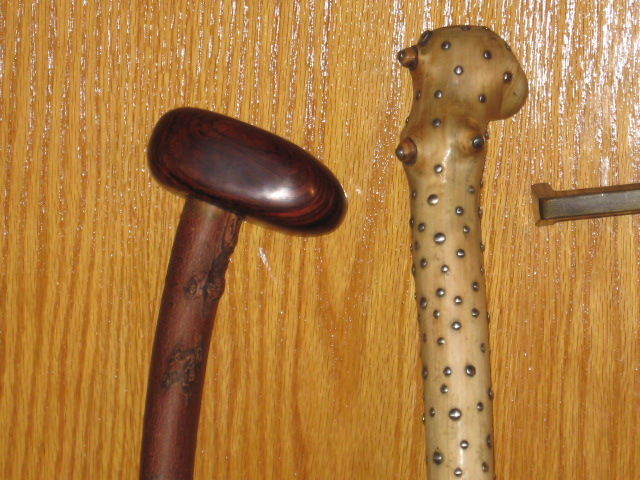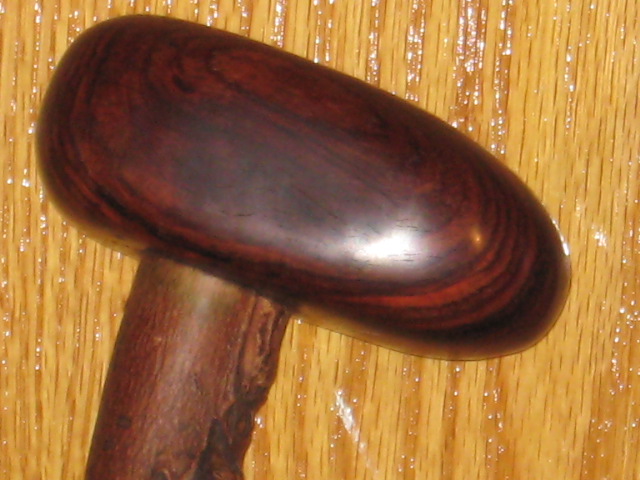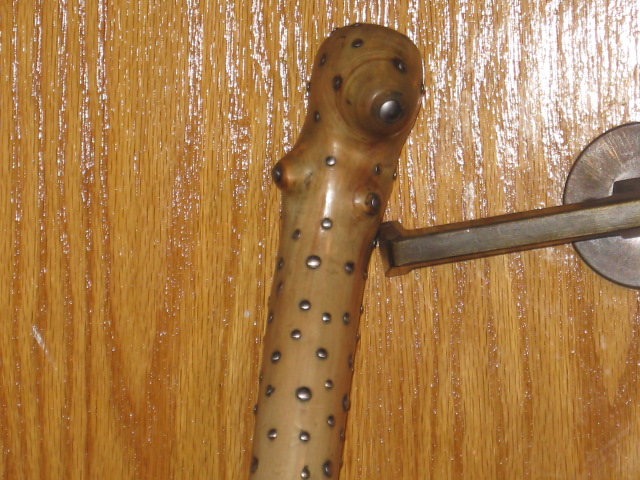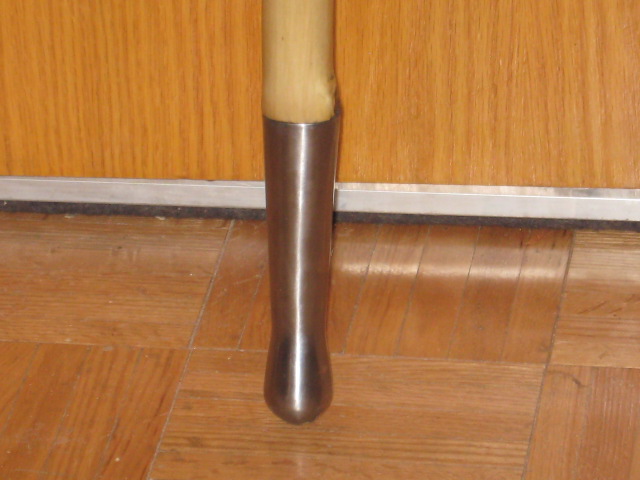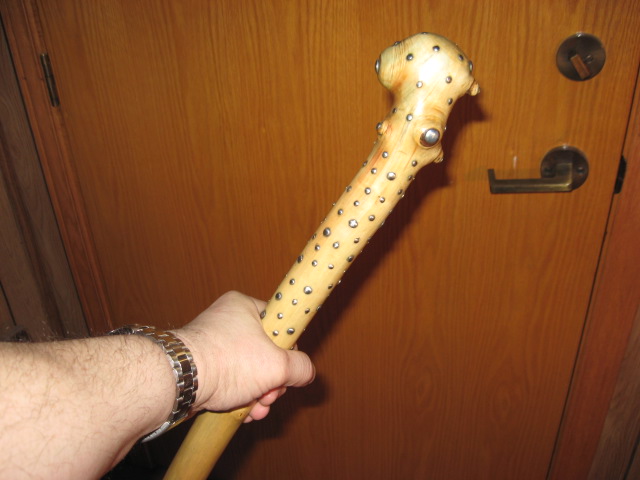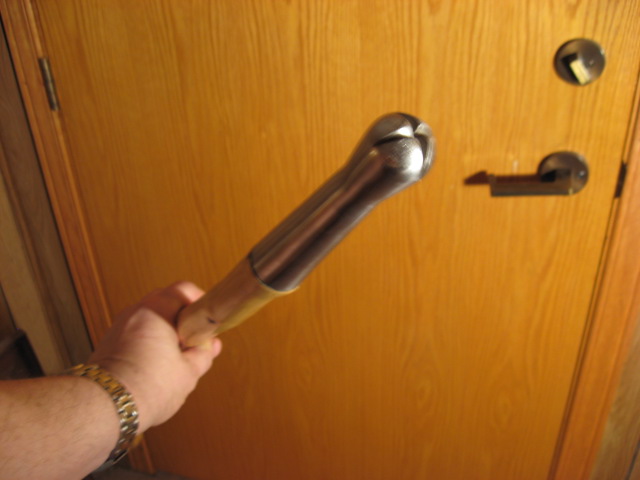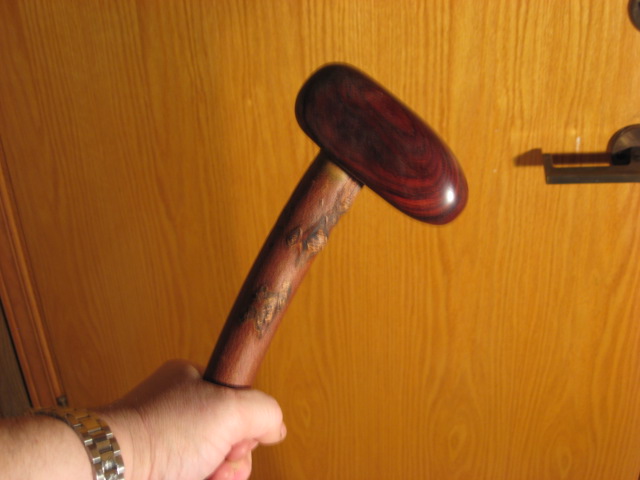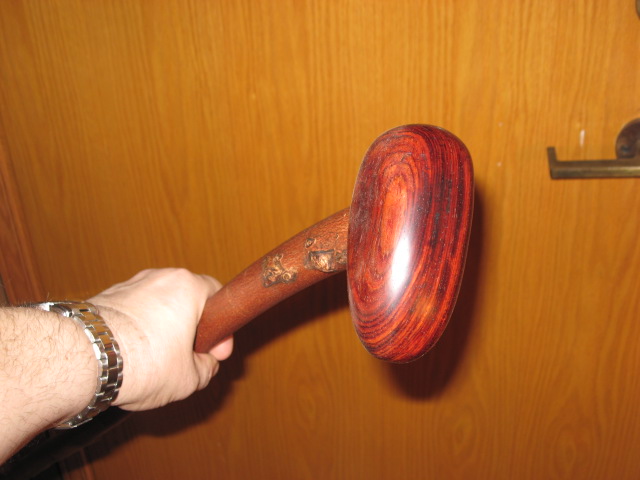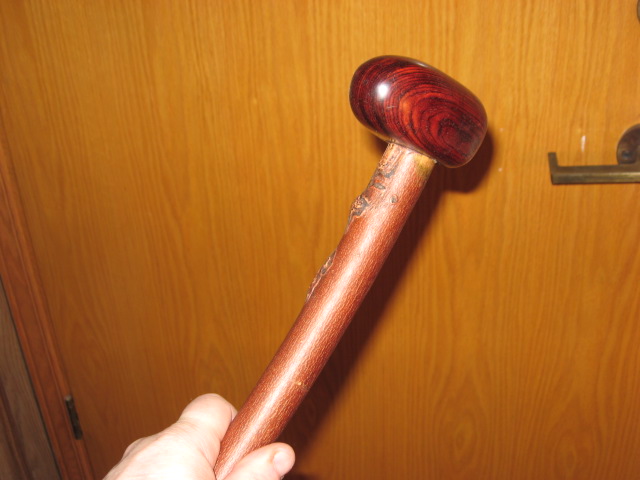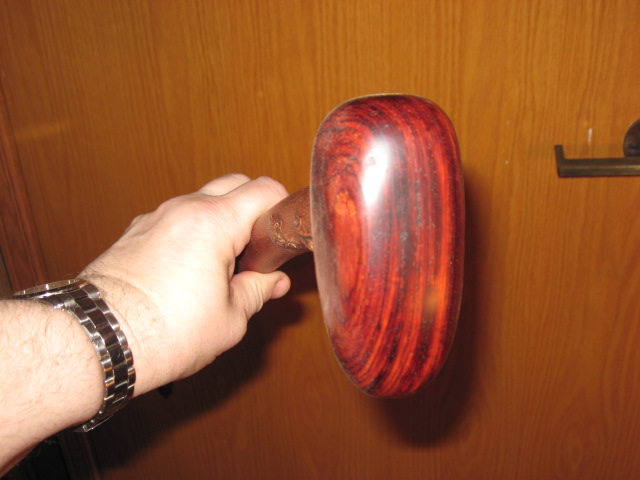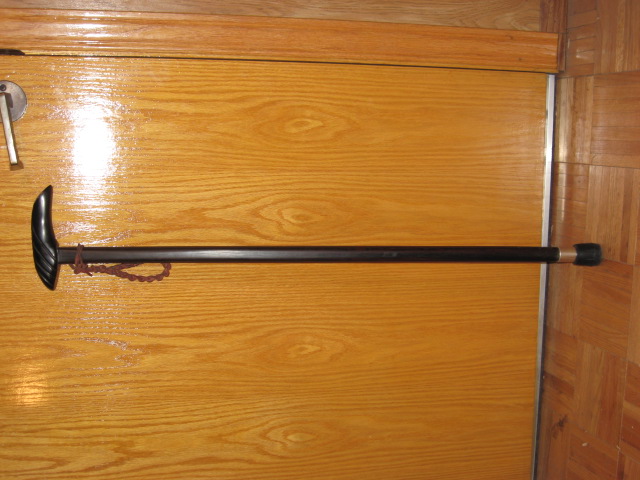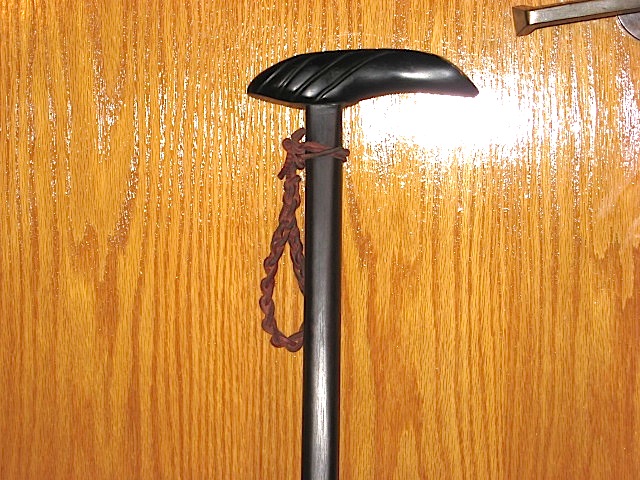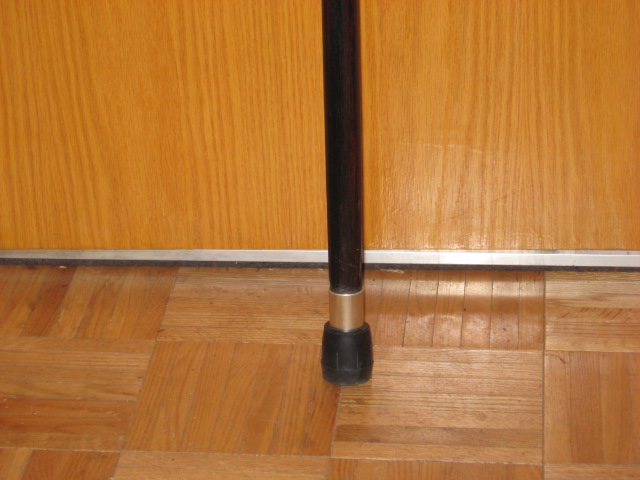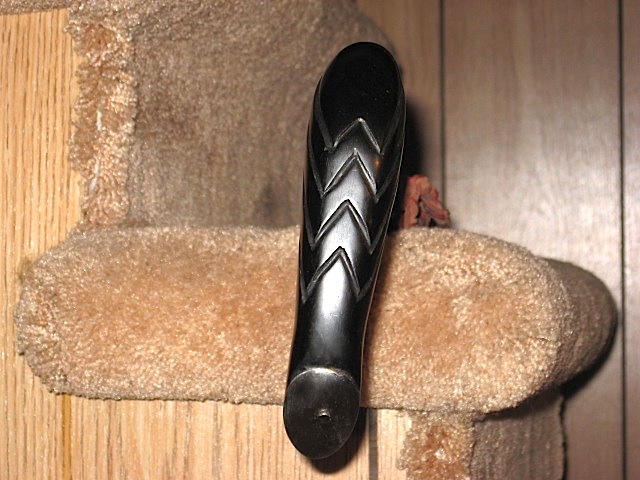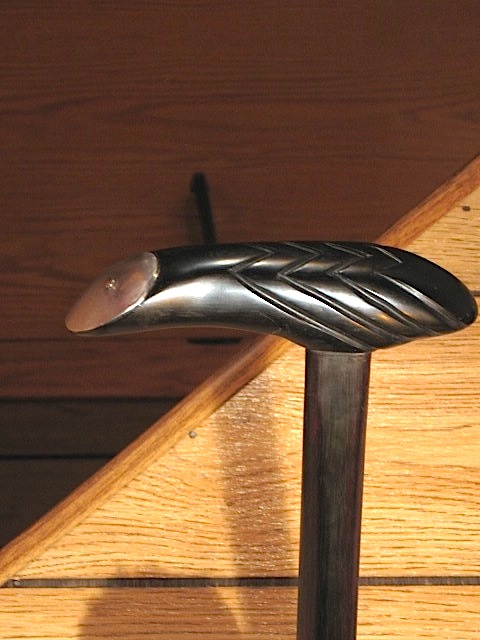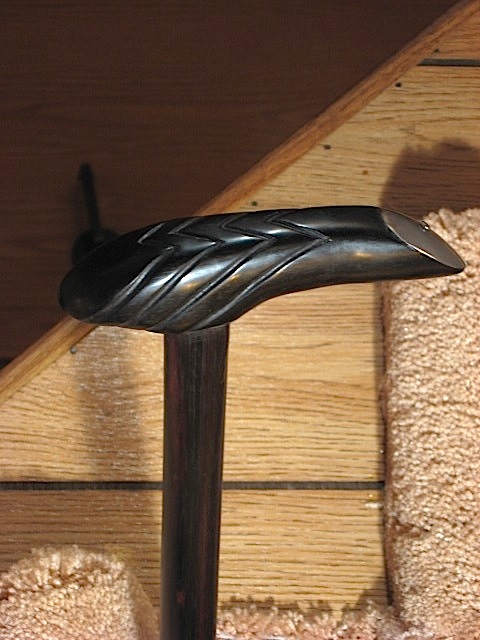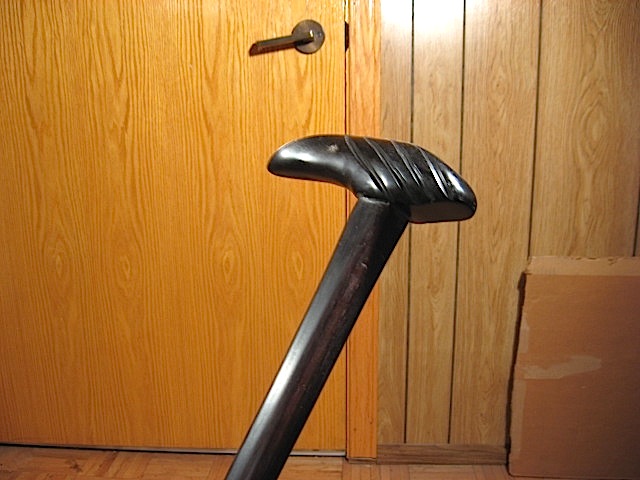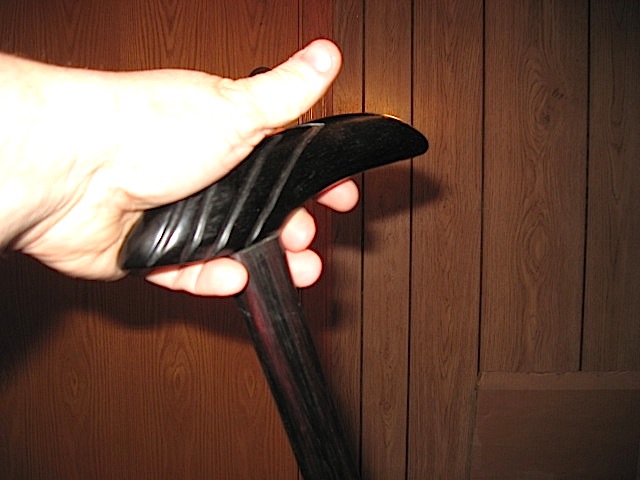Carved in low relief, Lilac is fairly hard like White Oak or Ash but it's not generally available as lumber because the Lilac bush grows with very crooked trunk and branches that would not be easily cut into planks of a usable size.
EDITED, harder than White oak or Ash:
| Quote: |
| Janka Hardness: 2,350 lbf (10,440 N)* |
The wood can also badly split as it dries, but the way around that is to leave the bark on the cut off branches and put some vaseline at the cut ends to that the ends don't dry faster than the rest of the wood. I let this piece dry out for 1 1/2 years before working with it and it didn't crack at all. Another small branch section I deliberately didn't cover the exposed ends just to see what would happen and that piece developed a crack at least 1/4" wide ...... WTF !
Maybe more information than you probably need to know about Lilac ...... LOL. Oh, as a side benefit when carving Lilac one gets the smell of Lilac blossoms although the nice smell goes away fairly soon.
It's difficult to show the whole stick in the wide shots and show the details of the sculpting at the same time.
Angled shots help to show details but the perspective does distort the dimensions making what is close to the camera look a lot bigger and what is away from the camera looks sort of too small.
Keep in mind the proportion of the wide shots taken at 90° where there is the least distortion and sort of average out from all the other pics.
The sculpture is different all around the stick so I tried to show you the stick on every side.
I left the stick very thick in cross section and the pic showing it with a previous stick helps in getting an idea as to scale + the pics of my holding it. ;) :D
